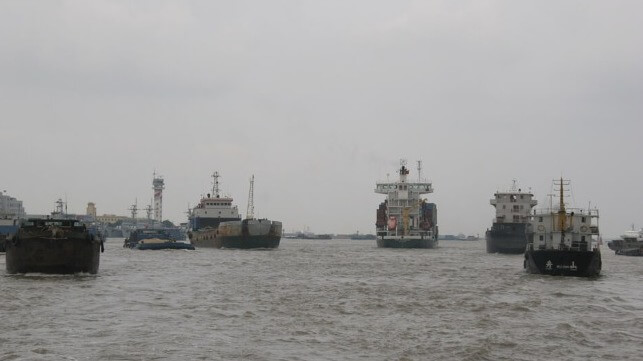China’s Yangtze River Also Reports Falling Water Threatening Shipping

While attention is focused on the falling water levels along the Rhine and its impact on Germany and Europe, word comes that China is facing a similar challenge along the Yangtze, the country’s longest river. Always one of the most important inland waterways in the country, China in recent years has invested heavily in the Yangtze seeking to enhance its role both in supplying inland regions and becoming an increasingly important pipeline to move exports to the major seaport at Shanghai located on the Yangtze Delta.
As southern parts of China endure historic heatwaves and drought, water levels at Hankou, a key monitoring point on the Yangtze River near Wuhan dropped to 17.54 meters (57.5 feet) last week, which the authorities report is about six meters (20 feet) lower than the average in recent years. According to local media, citing Chinese disaster response authorities, this is the lowest level seen for this time of the year since records began in 1865.
The Yangtze’s middle and lower reaches have experienced the most water levels decline. Temperatures in the downstream regions have been over 40 Celsius (104 Fahrenheit) over the past one month, with some experts blaming climate change-induced variations. The heatwave is expected to last for another two weeks according to a forecast by China’s National Climate Center.
Recent data from the Yangtze River Water Resources Commission indicate that the river’s drainage area fell about 30 percent in July and is 60 percent lower than normal in August, with the river’s tributaries “significantly lower” than historical levels.
Chinese officials are warning that although the declining water levels along the Yangtze are yet to impact navigation services, a threat is imminent if drought conditions remain severe. Stretching nearly 4,000 miles from the Tibetan Plateau in the west to the East China Sea near Shanghai, the river is also the longest in Asia. About one-third of China’s population depends on the Yangtze River basin.
Besides supplying irrigation water to thousands of acres of arable land across six provinces of Southern China, the Yangtze River is nicknamed China’s “golden shipping route” for the massive maritime role it plays as an inland waterway.
In the first seven months of this year, major ports along the Yangtze posted a total throughput of 2.02 billion tonnes of cargo, as per the data from the administration of navigational affairs on the Yangtze River under the Ministry of Transport.
The Yangtze River delta is also the leading cluster for China’s advanced manufacturing, with a third of the top 500 companies headquartered in the region.
Top photo by Kimoin Berlin showing Yangtze near Shanghai (CC BY-SA 2.0 license)
